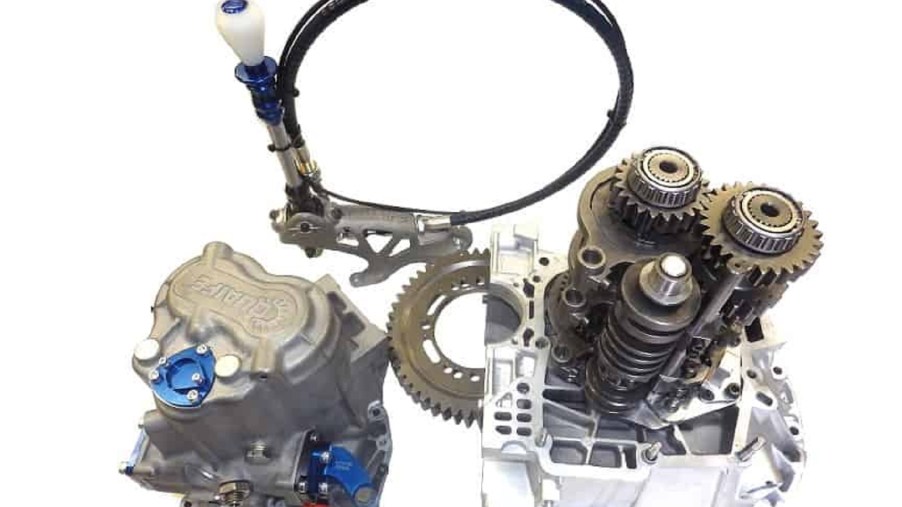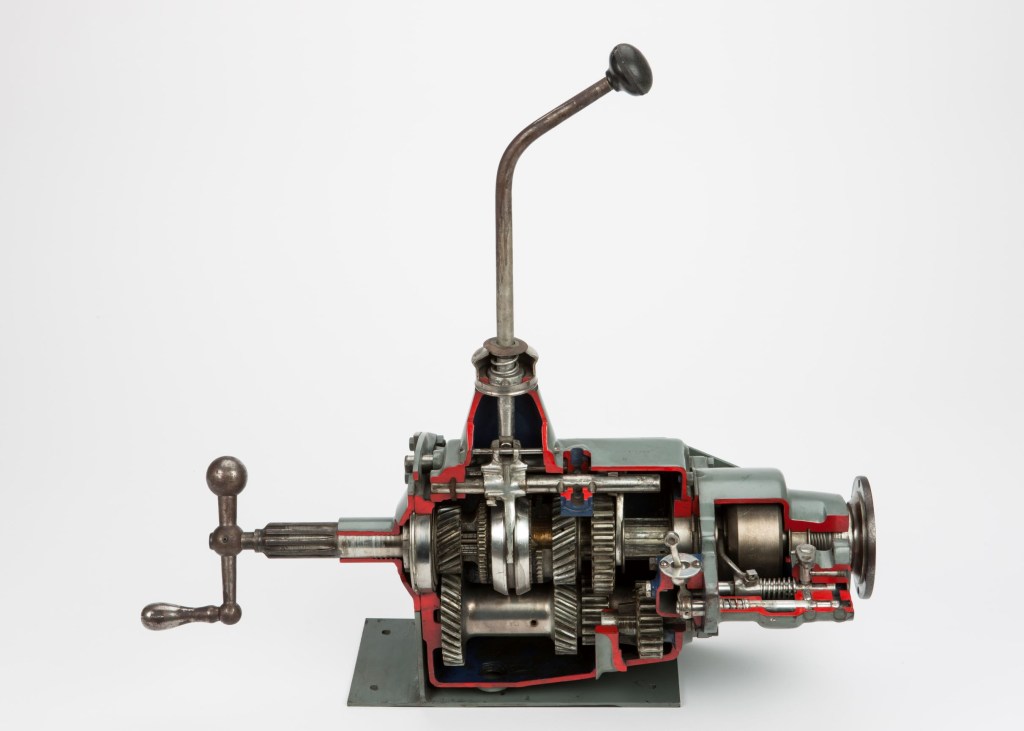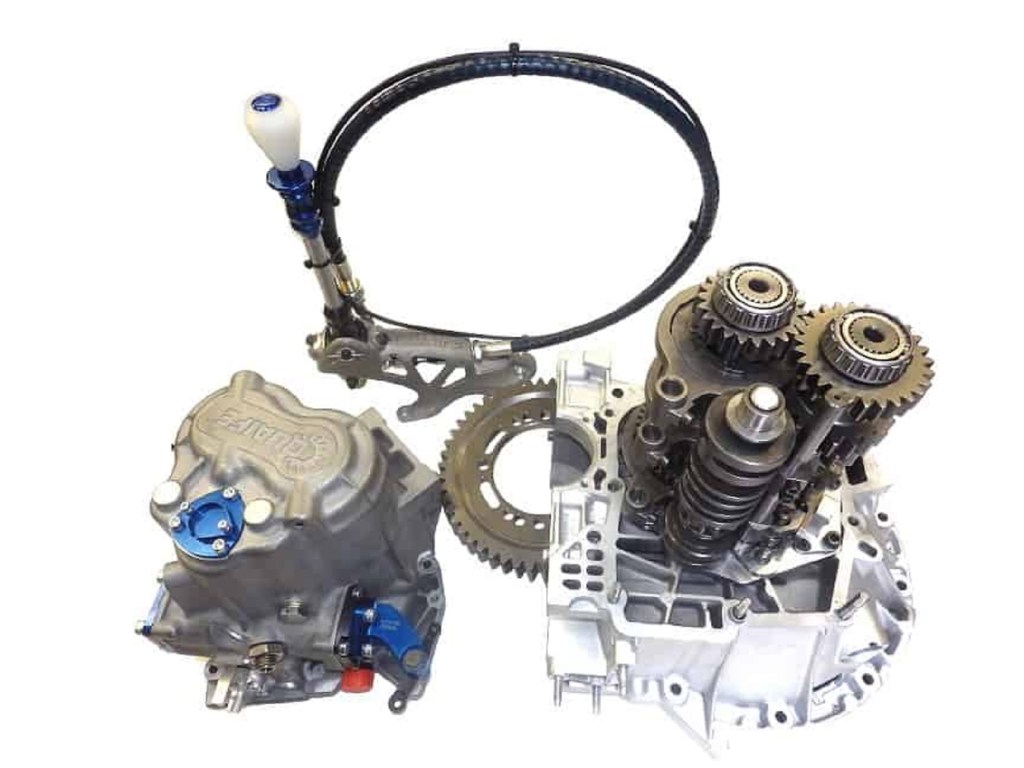
What Is a Sequential Transmission and How Does It Work?
With how fast modern automatic transmissions are, it’s little wonder that fewer cars require mastering the three-pedal dance. But the manual transmission is still the gearbox of choice for many enthusiasts. And although F1 no longer uses it, some racing series stick with the stick-shift. However, even these race cars don’t always have ‘conventional’ manuals. Instead, they often feature sequential transmissions.
How does a sequential transmission work?

On a very basic level, a sequential transmission works the same way as a ‘regular’ manual gearbox. By pulling and pushing a shifter, the driver changes how the gears on the transmission’s input shaft interact with the gears on the output shaft. That way, power goes from the engine to the differential and the drive wheels.
However, there are several significant differences between a sequential manual transmission and a ‘regular’ one. Externally, the most obvious is that sequential shifters don’t move through an H-pattern. Instead, they only move forwards and backward, something co-opted by automatics that offer manual modes. Also, as in F1, racers really only use the clutch to start off, rather than during shifting, CarThrottle says.
These external differences stem from what makes sequential transmissions different internally. Firstly, instead of synchromesh rings, sequential gearboxes have dog clutches, aka ‘dog gears,’ MotorTrend explains. At least, automotive ones do, but more on that later. Secondly, conventional manuals swap gears using multiple selector forks controlled by the shifter. But a sequential shifter doesn’t move these forks directly. Instead, it rotates the grooved cylinder, sometimes called a ‘selector shaft’ or ‘selector drum,’ that the forks are attached to.
That shaft and those dog gears shape how sequential transmissions shift. To start, the driver pushes down the clutch pedal and pulls/pushes the shifter to engage first. But after that, they rarely use the clutch pedal. Instead, they simply pull or push the shifter, a bit like someone ‘slip shifting’ a manual. This rotates the selector shaft, thus moving the selector forks and shifting into the next gear. There’s no need to pull on any paddles or move through any gates. Just ease off the throttle, yank the shifter, and go.
Are sequential transmissions faster than manual or dual-clutch transmissions?
Dual-clutch transmissions are a common sight on many performance cars and their racing equivalents. That’s because they offer smooth, lightning-fast shifts, especially at high speeds. However, a sequential transmission is even faster than a DCT, Road & Track says. And it’s definitely faster than even a professional-shifted manual.
That extra speed comes from several advantages sequential gearboxes have over DCTs. For one, they’re significantly lighter and often more compact. Secondly, they have fewer gear shafts, meaning the engine has less mass to spin and is, therefore, more responsive. Also, dog gears sap less power than synchromesh ones.
Because of these benefits, sequential transmissions are still commonly used in racing. NASCAR’s Next Gen racer, for example, has one. Rally cars use them, too. Plus, every manual-shifting motorcycle has a sequential gearbox.
But if they have so many advantages over DCTs, why don’t more street-legal cars offer them?
Can and should you put one in your street-legal car?

It’s worth noting that automakers occasionally offered sequential transmissions in their street-going cars. The Toyota MR2 Spyder, for example, had one, Car and Driver reports. But despite its name, the ‘Sequential Manual Gearbox’ in the E46 M3 was an automated manual, not a true sequential.
Regardless, it is possible to swap a sequential gearbox into a street-legal car. Several aftermarket companies offer conversion kits and/or ready-built units. Noted Alfa Romeo restoration shop Alfaholics even offers one for its builds.
However, there are several crucial reasons why road cars don’t use sequential transmissions. For one, dog gears are nowhere near as smooth as synchromesh ones because they slam together rather than smoothly mesh. Remember how earlier we said sequentials are faster than DCTs? That’s because drivers have to shift quickly to minimize gear wear, MT explains. And even if they do, these gears engage more abruptly and with significantly more noise. That’s the crucial difference with motorcycle transmissions: they have synchros, not dog gears.
Also, even though they’re thicker and stronger than conventional gears, dog gears still wear out significantly faster. A racing sequential transmission needs a rebuild after just a few thousand miles, R&T says. Ironically, stop-and-go traffic conditions cause even more wear on these gearboxes, MT reports. Plus, speaking of traffic, sequential transmissions can’t skip gears like conventional manuals.
So, yes, for race cars, sequential transmissions offer notable performance benefits. But if you want to row through the gears in your road car, the manual is still the way to go.
Follow more updates from MotorBiscuit on our Facebook page.


